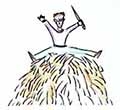The Internet offers translators instant access to a vast source of information, but looking for relevant information without the right tools can be like searching for a needle in a haystack. In a fast-paced world with technology constantly progressing and the dictionary printing industry struggling to keep up with the changing language—and with clients who have come to expect instant turnaround—translators can ill afford to waste precious time surfing the Internet in vain for terminology: what we need is instant access to relevant information that will enable us to deliver high-quality translations within the tightest of deadlines. The WWW Search Interfaces for Translators and other techniques presented in this course provide just that.
During this course, Tanya Harvey Ciampi will present a series of Internet search techniques specially designed to help translators sift out relevant terminology from the Internet, separating the wheat from the chaff: she will reveal fast and effective methods for locating definitions and translations of terms in various languages in free online glossaries, dictionaries and so-called “parallel texts”, i.e. equivalent texts available in two or more languages. Designed by a translator for translators, this course goes well beyond any general internet course, unveiling a wealth of resources that are just a click away.
Tanya Harvey Ciampi grew up in Buckinghamshire (England) and the Italian-speaking canton of Ticino in southern Switzerland. She obtained her diploma in translation in Zurich in 1993 and now lives in Maggia, Ticino.
Her past employers include Rank Xerox Language Technology Centre/Ford Motor Company in Slough, England, and Merrill Lynch International Investment Bank in London. She currently works as a freelance English translator (translating from Italian, German and French) and proofreader.
This course has been held for many years at the University of Applied Sciences in Zurich/Winterthur (ZHAW) as well as at CLS Communication AG (Berne), the Federal Department of Justice and Police (Berne) and Banca del Gottardo (Lugano) among others.
|


